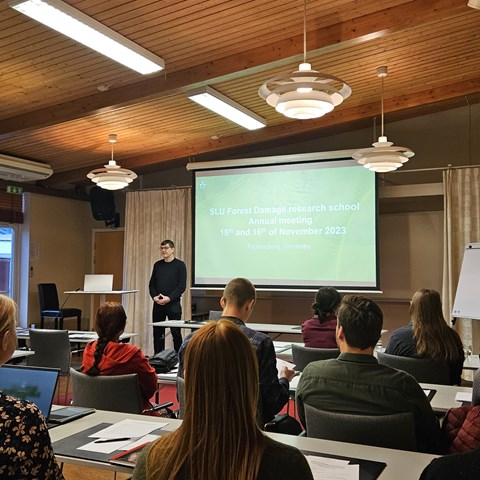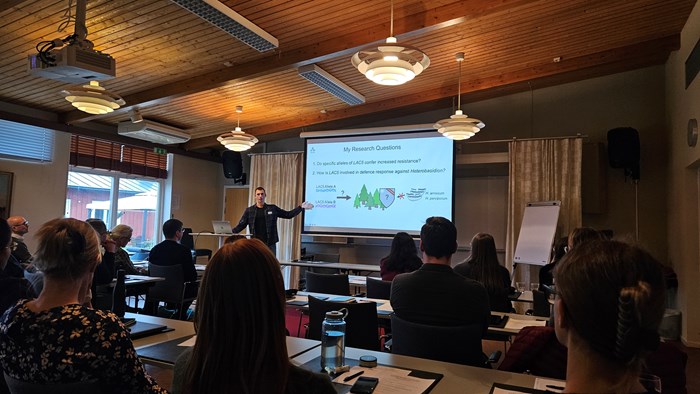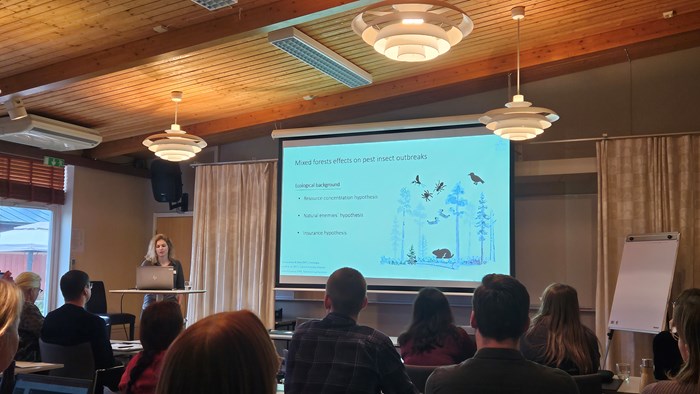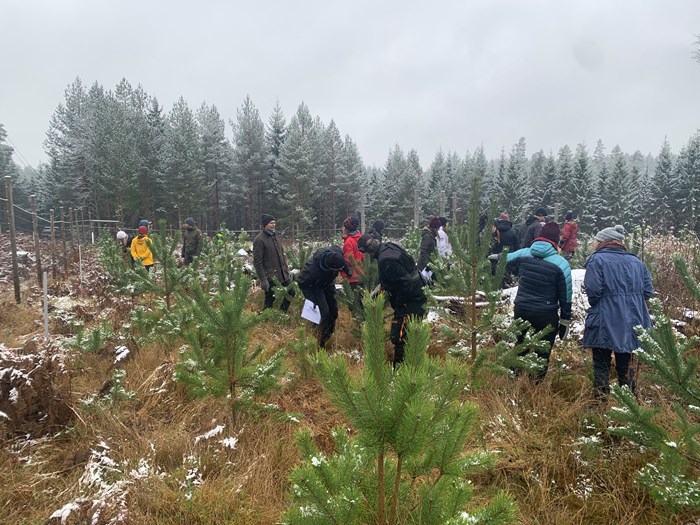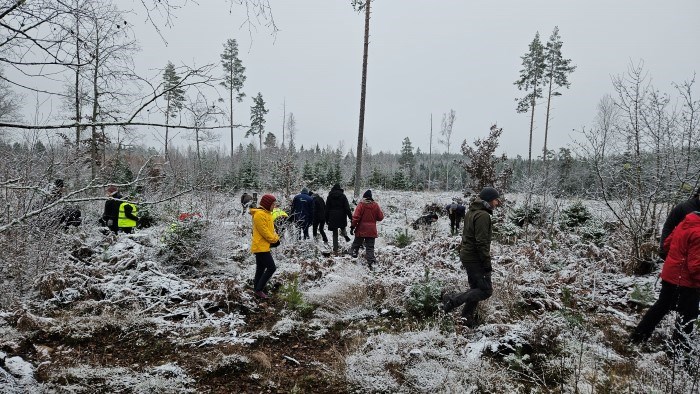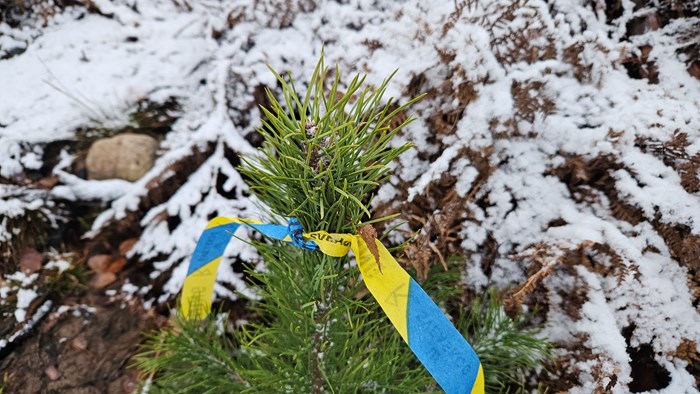‒ It was really exiting to hear all the presentations by the PhD students and I’m glad that so many got to meet, discuss and exchange ideas during these days. This first annual meeting was really successful, says Åke Olson responsible for the research school at SLU Forest Damage Centre.
During the day the group also discussed future activities for the PhD students within the research school. Mentorship, different excursions and how to extend the exchange between organisation and research education was some examples that was brought up.
‒ We are pleased that the research school is now in full progress, and I was deeply impressed by the presentations. Highly relevant forest damage issues were covered in a wide range. We got a good overview of all the exciting projects that are ongoing and starting, and we will follow the research school with great interest, says Fredrik Klang at Sveaskog.
On the second day of the annual meeting the whole group headed out to forest sites own by Sveaskog to look at some findings of forest damage and to see an experiment that is led by Skogforsk. The experiment is trying to understand why abnormalities like multiple shoots and stems occur on seedlings. The excursion was appreciated among the group and Oskar Nilsson from Skogforsk got a lot of questions from the curios audience.
Annual meeting - possitive both among PhD students and sector
‒ I have a background that is more in molecular biology, the excursion was really helpful for me to understand the more ecological side of it, says Annika Nordström PhD student in the department of Forest Genetics and Plant Physiology.
Many of the participants felt that the meeting was a great opportunity to meet, network and broaden the knowledge of challenges in the area.
‒ Very professional presentations from the PhD students, even those who had just started. Impressively well-informed and ready to discuss small and large questions about their subjects. Those who got further already had interesting results to offer, says Gisela Björse Forestry manager at Sveaskog.
The interaction between PhD students, researchers and the forest sector was also one of the things brought up as a highly positive element.
‒ Having stakeholders from Sveaskog and SCA comment on the presentations helped put everyone’s research into a broader context and showed applicability of the projects, says Lukas Graf PhD student in in the department of Southern Swedish Forest Research Centre.
‒ I thought the annual meeting was really nice. I especially liked the inclusion of leaders from several forest companies, so we could step out of the limits of academia and discuss different issues, says Matej Domevscik, PhD student in the department of Southern Swedish Forest Research Centre.
He continue to reflect on how most such conferences otherwise end up with academics talking to each other, which creates a confirmation bubble and how nice it was for the industry to actively show that they are interested in the work and these young researchers.
